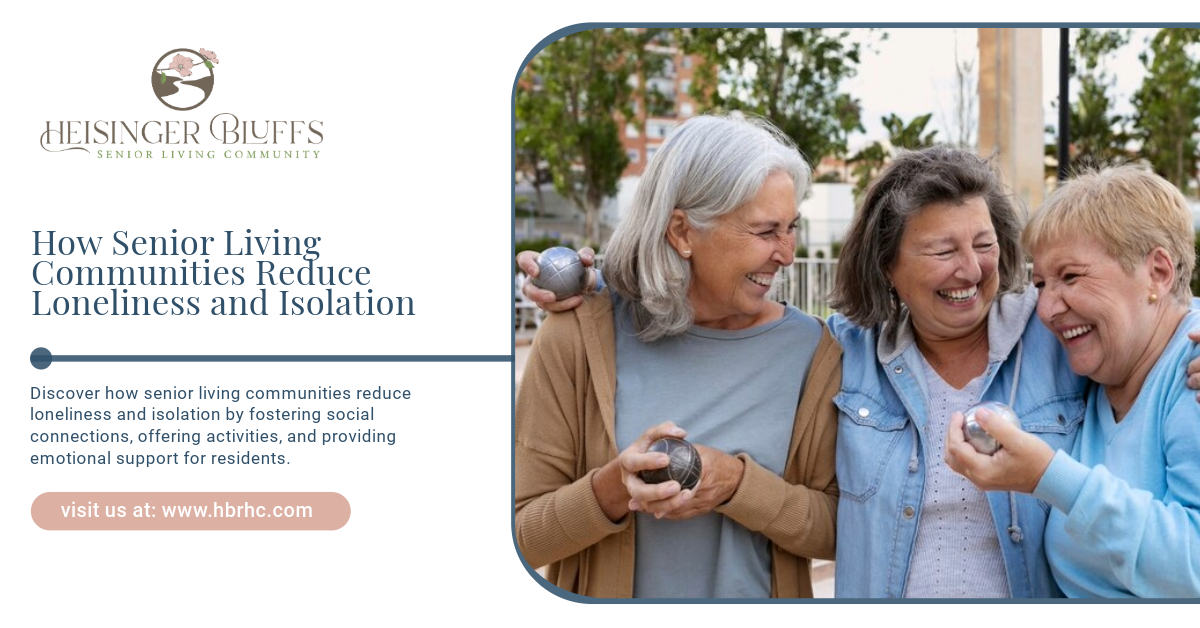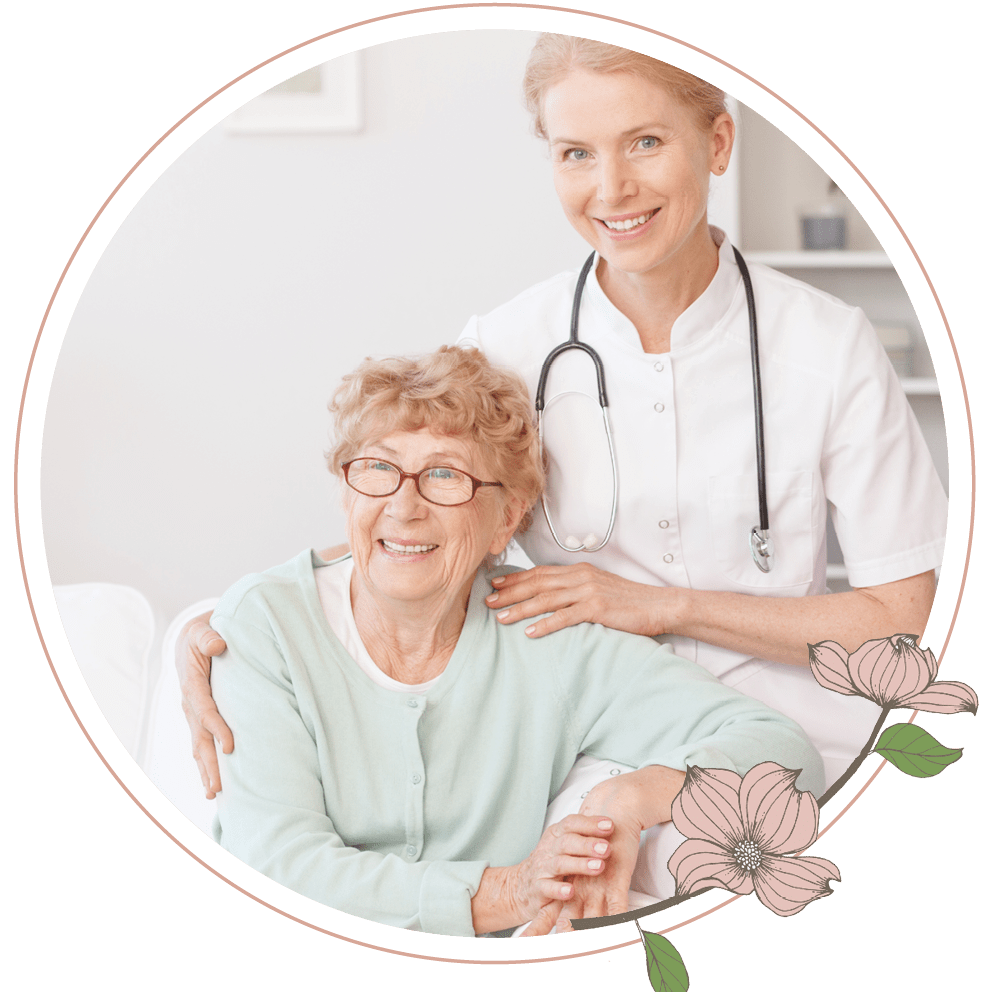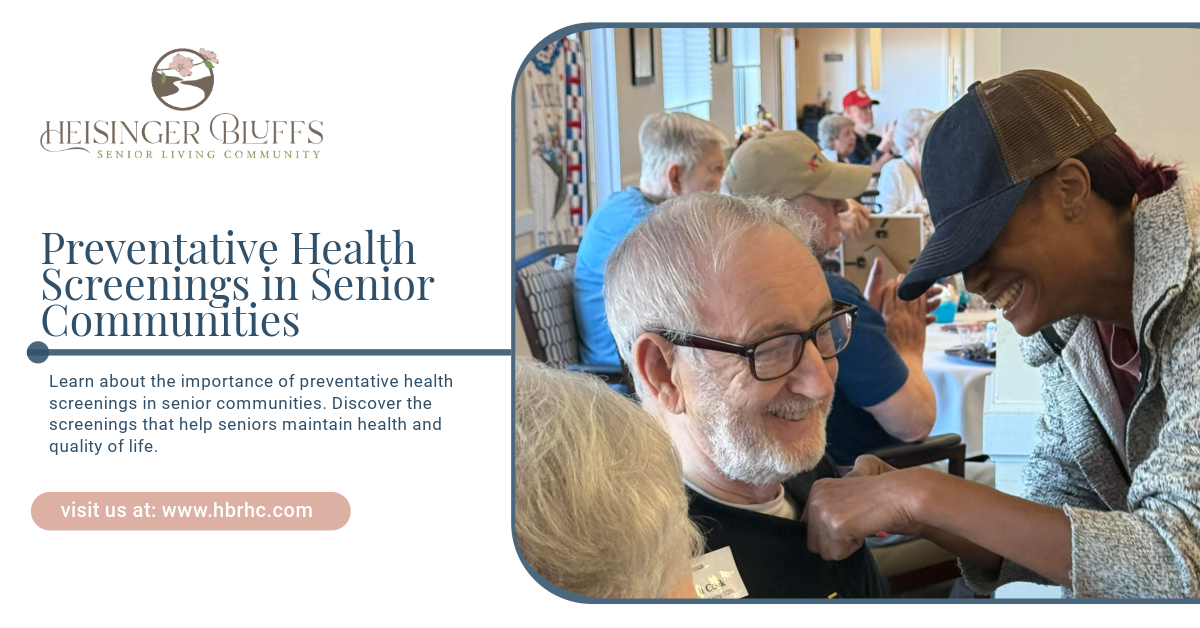How Senior Living Communities Foster Connection and Reduce Loneliness

As we age, maintaining strong social connections becomes increasingly important. Unfortunately, many seniors face the challenges of loneliness and isolation, especially if they live alone or far from family and friends. This isolation can have significant effects on both mental and physical health, leading to increased risks of depression, anxiety, and even chronic diseases. However, senior living communities provide an environment that combats these issues, offering residents the opportunity to stay connected, engage in meaningful activities, and receive emotional support.
In this blog post, we’ll explore how senior living communities play a crucial role in reducing loneliness and isolation among older adults, ultimately helping to improve their quality of life.
The Importance of Social Connections for Seniors
Social connections are vital for people of all ages, but they become particularly important as we grow older. Research has shown that strong social networks contribute to better mental and physical health, increasing life satisfaction and reducing the risk of certain illnesses. For seniors, maintaining friendships and staying socially active can help:
- Enhance emotional well-being: Regular social interactions can reduce feelings of loneliness, boost mood, and provide emotional support.
- Stimulate cognitive health: Engaging in conversations and group activities helps to keep the mind sharp and may lower the risk of cognitive decline.
- Improve physical health: Social connections can encourage seniors to stay physically active, as many activities in senior living communities involve movement, such as walking groups, exercise classes, and dance events.
- Extend longevity: Studies have shown that seniors with strong social networks tend to live longer, healthier lives compared to those who experience chronic loneliness or isolation.
Unfortunately, many older adults find themselves without consistent social interaction as they age, which is where senior living communities can step in and make a profound difference.
How Senior Living Communities Combat Loneliness
Senior living communities are designed with the social and emotional needs of residents in mind. These communities provide a supportive environment where residents can engage with others, participate in group activities, and build meaningful relationships. Here are some key ways senior living communities combat loneliness and isolation:
1. Opportunities for Social Engagement
Senior living communities offer a wide variety of social activities and events designed to bring residents together. From group exercise classes and hobby clubs to movie nights and game tournaments, there is always something happening that encourages interaction and camaraderie. These activities provide residents with multiple opportunities to meet new people, form friendships, and participate in shared experiences.
For seniors who may feel shy or hesitant to join social events, staff members are often available to facilitate introductions and help residents get involved. This active effort to encourage participation can be particularly helpful for individuals who are transitioning from living alone and may not be used to frequent social interaction.
2. A Sense of Belonging and Community
Living in a senior community means being part of a larger network of individuals who are experiencing similar life stages. This shared experience fosters a sense of belonging and helps seniors feel more connected to those around them. Many residents find comfort in knowing that they are not alone in facing the challenges that come with aging.
This sense of community can be especially comforting for those who have recently lost a spouse or close friends. Senior living communities create an environment where new friendships can blossom, and where support is available from both peers and staff.
3. Structured Routines and Daily Activities
One of the challenges of living alone is the lack of a structured routine, which can lead to feelings of boredom and isolation. Senior living communities provide a daily schedule of activities, which can include everything from exercise classes and art workshops to group outings and guest speakers. Having access to these regular, structured activities helps residents maintain a routine that keeps them mentally and physically engaged.
For many seniors, simply knowing that there is a plan for each day—and people to share those activities with—can significantly reduce feelings of loneliness. The availability of diverse activities also allows residents to explore new hobbies, sharpen skills, and stay active, all while connecting with others.
4. Emotional Support from Peers and Staff
Living in a senior community provides residents with access to a support system that extends beyond their family members. In addition to making friends among fellow residents, seniors can also rely on trained staff members for emotional support and companionship. Staff are trained to recognize signs of loneliness or depression and can offer assistance or recommend resources to help.
Having regular access to both peers and staff members provides residents with multiple avenues for expressing their feelings, discussing concerns, and seeking advice. This emotional support can make a world of difference for seniors who may be dealing with life transitions, health issues, or feelings of grief.
5. Health and Wellness Programs
Physical activity plays a significant role in combating loneliness and improving mental health. Many senior living communities offer health and wellness programs tailored to the needs and abilities of older adults. These programs might include group exercise classes, walking groups, yoga, or water aerobics. Participating in physical activities not only helps seniors stay fit but also provides opportunities for social interaction and bonding.
Moreover, regular physical exercise has been shown to reduce stress and anxiety, improve mood, and boost overall mental well-being. For residents dealing with loneliness or isolation, participating in fitness programs with their peers can provide a much-needed sense of connection and accomplishment.
The Impact of Isolation on Seniors
Understanding the importance of combating loneliness becomes even more pressing when considering the impact that prolonged isolation can have on seniors' health. Isolation is not just an emotional burden; it can lead to a range of negative physical and mental health outcomes, including:
- Increased risk of depression and anxiety: Social isolation has been strongly linked to feelings of depression, anxiety, and sadness in seniors. Without regular social interaction, it becomes harder to maintain a positive outlook on life.
- Decline in cognitive function: Loneliness and isolation have been associated with accelerated cognitive decline and an increased risk of conditions like dementia. Engaging in social and intellectual activities helps keep the brain active and functioning.
- Higher rates of chronic illness: Isolated seniors are more likely to suffer from chronic illnesses, such as high blood pressure, heart disease, and obesity. These health conditions can be exacerbated by inactivity and lack of social support.
- Weakened immune system: Studies have shown that loneliness can have a negative impact on the immune system, making seniors more susceptible to infections and illnesses.
- Increased mortality rates: Loneliness and isolation have been linked to higher mortality rates among seniors. Social connections are not only vital for emotional well-being but also for physical survival.
By addressing these risks, senior living communities offer a protective buffer against the harmful effects of isolation, ensuring that residents receive the social interaction and support they need to thrive.
How Senior Living Communities Promote Purpose
In addition to fostering social connections, senior living communities also provide opportunities for residents to find purpose and meaning in their daily lives. As we age, having a sense of purpose can be a critical factor in maintaining mental and emotional well-being. Here are a few ways senior living communities help residents find purpose:
1. Opportunities for Leadership and Volunteering
Many senior living communities offer residents the chance to take on leadership roles within the community, whether by organizing events, leading hobby groups, or participating in community advisory boards. Volunteering or taking on a leadership position allows residents to contribute their skills and experience, which can foster a sense of accomplishment and purpose.
2. Engagement in Lifelong Learning
Senior living communities often offer educational programs, workshops, and guest lectures to stimulate the intellectual curiosity of their residents. These learning opportunities provide a sense of purpose by encouraging residents to continue exploring new interests, expanding their knowledge, and staying mentally active.
3. Participation in Creative Arts
Creative activities such as painting, writing, or crafting allow residents to express themselves and explore new hobbies. These activities not only serve as a creative outlet but also promote relaxation and emotional fulfillment. Being involved in creative endeavors can help seniors find purpose in their daily lives.
4. Intergenerational Activities
Some senior living communities facilitate intergenerational programs that connect residents with younger people, such as school children or young volunteers. These interactions can provide a sense of purpose and joy, as seniors share their experiences and knowledge with younger generations.
A Community That Cares
Senior living communities are uniquely equipped to address the challenges of loneliness and isolation among seniors. Through structured activities, emotional support, and opportunities for engagement, these communities provide residents with the tools they need to build strong social connections and find a sense of belonging and purpose.
At Heisinger Bluffs, our vibrant and supportive environment helps residents combat loneliness while fostering a true sense of community. By offering personalized care, a wide range of activities, and emotional support, we ensure that our residents lead fulfilling and connected lives.











